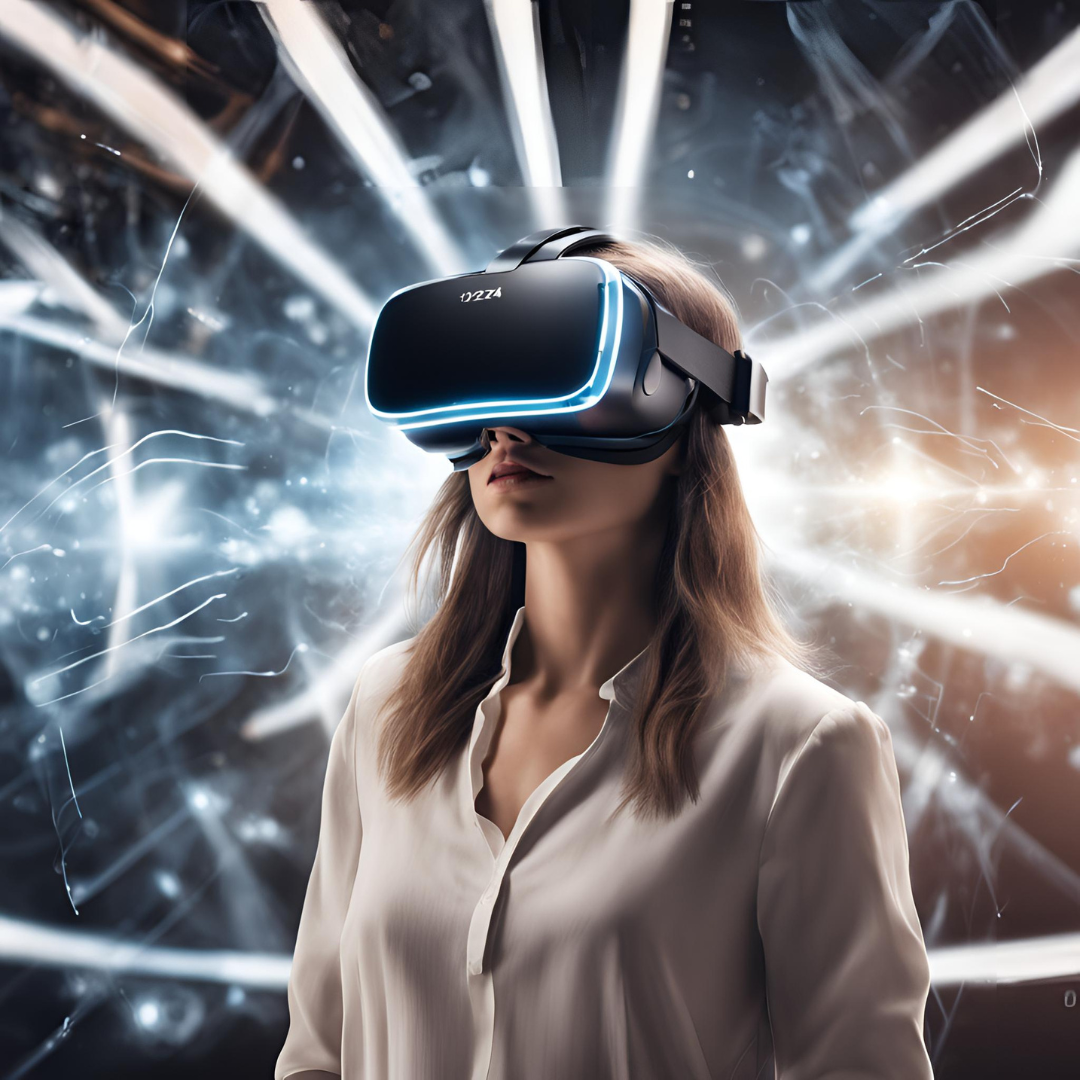From a mere novelty, Virtual Reality (VR) has become an industry game-changer. Various sectors, such as gaming, healthcare, education, real estate, and social interaction, have experienced its impact. As we approach 2024, VR continues to advance, and this article delves into its present state, its possible applications, and the potential future developments that could revolutionize our digital encounters.
1. The Evolution of VR Technology
The story of VR technology started in the 1960s when the Sensorama and Ivan Sutherland's initial head-mounted display system were invented. Nonetheless, it wasn't until the 2010s that VR became popular with general consumers, thanks to the introduction of user-friendly VR headsets like the Oculus Rift, HTC Vive, and PlayStation VR.
Hardware Advancements: VR technology has undergone substantial enhancements over time. Present-day VR headsets have advanced features such as wider fields of view, improved resolution, and comfortable, ergonomic designs. The advent of standalone VR headsets like the Oculus Quest series has made VR more widely available by eliminating the requirement for high-powered PCs or gaming consoles. These advancements have broadened the scope of VR technology, opening up new possibilities for users and applications.
Software and Content: As technology advances, so does the world of virtual reality. Not only has hardware improved, but software and content have also made significant strides. With the help of better graphics, artificial intelligence, and user interface design, developers are creating more engaging and interactive experiences than ever before. This has led to an array of VR content, ranging from games and simulations to educational programs and virtual tours, which has broadened the appeal of VR to a wider audience.
2. VR in Gaming and Entertainment
VR technology continues to have a significant impact on the gaming industry, as it remains one of the most beloved and widely used applications. The all-encompassing experience offered by VR is unparalleled in gaming, providing players with the opportunity to explore virtual environments and engage with them in unprecedented ways.
Immersive Gameplay: Virtual reality games offer a level of immersion that is unmatched. Games like "Half-Life: Alyx," "Beat Saber," and "The Walking Dead: Saints & Sinners" have raised the bar for VR gaming by blending breathtaking visuals with interactive gameplay. The capacity to move, observe, and interact with objects in a digital world creates a feeling of being present, which enriches the gaming experience.
Social VR: Social VR platforms such as VRChat, Rec Room, and AltspaceVR are becoming increasingly popular as they offer more than just solo experiences. They enable users to gather, mingle, and participate in a range of activities within simulated settings. Social VR is revolutionizing the way people engage and communicate over the internet, from virtual exhibitions to collective creative projects and even virtual soirées.
3. VR in Healthcare
VR is making its presence felt in the healthcare industry too, with a notable impact. This technology is being employed for diverse purposes, including medical education and counseling, as well as for patient care and recovery.
Medical Training: Medical professionals can now hone their skills in a secure setting thanks to the advent of virtual reality technology. VR platforms such as Osso VR and Touch Surgery provide immersive, interactive simulations that allow surgeons to master intricate procedures without putting actual patients at risk. These cutting-edge tools are revolutionizing medical training and education.
Therapy and Rehabilitation: Virtual reality is proving to be beneficial in the field of therapy. Patients suffering from PTSD, anxiety, or phobias can be treated with VR therapy by immersing them in controlled virtual environments. In addition, VR systems such as MindMaze and VRHealth are being utilized in physical rehabilitation. These platforms incorporate fun exercises that promote the recovery of motor functions and coordination.
Pain Management: Immersive virtual reality is proving to be an innovative solution in the management of pain, presenting a different approach to traditional methods. Research indicates that VR experiences can divert patients' attention from pain, which means that medication is often not required. Medical facilities are now integrating VR into their pain management programs, providing patients with calming virtual surroundings while they undergo treatments.
4. VR in Education and Training
The possibilities for education with virtual reality are extensive, presenting interactive teaching opportunities that can simplify difficult topics and capture interest.
Virtual Classrooms: Virtual reality technology has allowed the development of simulated classrooms where students can engage with teachers and classmates. Applications such as Engage and AltspaceVR are now facilitating remote learning, providing virtual lectures, group conversations, and cooperative assignments. This innovative method can enrich the learning process by providing a feeling of presence and interaction that is not typically found on conventional online learning platforms.
Interactive Learning: The introduction of virtual reality has the potential to revolutionize the education of subjects such as history, science, and geography. With VR, students can immerse themselves in ancient civilizations, take a stroll through the inner workings of the human body, or witness natural phenomena in a simulated environment. This interactive, experiential style of learning has the ability to enhance comprehension and long-term retention of intricate ideas.
Professional Training: VR is not just limited to traditional educational purposes but has expanded to professional training in different fields. Professionals such as pilots and firefighters can now use VR to practice and improve their skills in risk-free environments. With companies like Strivr and Virti, VR training programs are being developed for corporate and industrial use, ensuring that workers are better prepared and safer.
5. VR in Real Estate and Architecture
The usage of VR is transforming the real estate and architecture fields by presenting fresh methods to view and engage with spaces.
Virtual Tours: Real estate professionals are utilizing VR technology to provide virtual tours of properties, enabling prospective purchasers to investigate houses and buildings from the comfort of their own surroundings. This technique saves time and money while delivering a more engaging and interactive experience than conventional photographs and videos. Online services such as Matterport and Zillow 3D Home are facilitating the spread and availability of virtual tour options.
Architectural Visualization:
By utilizing virtual reality, architects and designers can produce highly detailed and immersive visual representations of their projects. This allows clients to explore virtual models of buildings, providing constructive feedback and making informed decisions prior to the commencement of construction. Furthermore, VR facilitates greater collaboration between architects, clients, and construction teams, ensuring that design concepts are precisely communicated and comprehended.
Conclusion
In 2024, Virtual Reality technology is a powerful agent of change, impacting various sectors and facets of our daily routine. It has revolutionized the way we engage with the digital realm, from gaming and healthcare to education and socializing. As the technology progresses, overcoming obstacles and discovering new possibilities, it is evident that the future of VR will be more captivating, influential, and deeply ingrained in our existence.





Leave a Reply